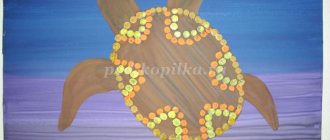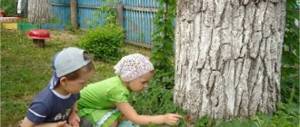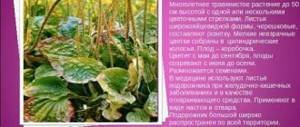The Arctic fox is a very beautiful and interesting animal. This animal is able to withstand very low temperatures thanks to its warm fur.
Everyone knows that their fur is very valuable. The arctic fox is often called the polar fox . You can see the animal Arctic fox in the photo .
Features and habitat
The arctic fox is an animal of the tundra , very similar to a fox, but its coat color is not red. The Arctic fox can be recognized by the following external signs:
- has a lush fur coat;
- fluffy tail;
- color can be different (yellowish-gray, white, bluish);
- short muzzle;
- ears are small and round;
- body length 45-70 cm;
- tail up to 32 cm in length;
- the height of the arctic fox is no more than 30 cm;
- weight ranges from 3.6 kg (sometimes reaching a maximum weight of 8 kg);
- the body is squat;
- short legs;
- the animal has a keen eye, a good sense of smell and sensitive hearing;
- paw pads are covered with yellow hair.
The animal lives in snowy areas with low temperatures. The arctic fox can be found in Greenland, Alaska, Northern Russia and Canada.
Snow, frost, cold rocks and the ocean coast, here the animals cannot always find food, but they feel free and calm. In Russia, arctic foxes are forest animals ; they can often be found in the tundra and forest-tundra.
Animals can tolerate temperatures down to minus 50 degrees, and most of their lives pass at temperatures below zero. Depending on the season they change color. It is by coloring that one can distinguish the animal white fox from the blue fox.
These are the only tundra animals that have the ability to change color seasonally. Blue Arctic foxes are dark in color from light gray to dark gray with blue tints in winter. Arctic foxes molt twice a year.
Spring begins in April and lasts 4 months, and autumn lasts 3 months and begins in September. Arctic foxes have the best and most valuable fur in winter. In winter the fur is soft and delicate, and in summer it is hard and rough.
Presentations on the world around us
Create your teacher website PC and PPC courses Video lessons Olympiad Webinars for teachers
- home
- The world
- Presentations
Watch and download free lessons, tests, notes, presentations and other useful materials on the world around you for teachers and students. In this section you can get presentations on the world around .
- All 1390
- Lessons 527
- Presentations 403
- Tests 114
- Planning 64
- Events 90
- Other 192
- All classes
- For preschoolers
- 1 class
- 2nd grade
- 3rd grade
- 4th grade
- 5th grade
- 6th grade
- 7th grade
- 8th grade
- 9th grade
Presentation for the lesson on the surrounding world “The water cycle in nature” 3rd grade The presentation was created according to the program “School of Russia”, the surrounding world 3rd grade Pleshakov…. 10/08/2020 Zhanna Aleksandrovna Botalova 46 2 |
| Presentation for a lesson on the surrounding world in 2nd grade on the topic “Wild and cultivated plants” Presentation for a lesson on the surrounding world in 2nd grade... 10/06/2020 Sviridova Elena Vladimirovna 10 1 |
| For evidence Suvni ifloslanishdan saqlashimiz zarur. Ifloslangan suvdan barcha tirik mavjudot zararlanadi.Bunday suv inson organizmi uchun xavflidir.Toza suvni tejab ishlatish har birimizning burchimizdir…. 05/19/2020 Yodgorova Shaxlo Umaraliyevna 100 0 |
| Presentation on the topic: “A story about gophers” A story about gophers. This presentation provides detailed information about animals.... 06/01/2020 Zabusova Elena Ivanovna 71 0 |
| Presentation on the world around us on the topic: “History on a map” This presentation talks about the types of maps. The definition of map, scale... is given. 10/07/2020 Kuvshinova Svetlana Valerievna 12 0 |
“On a visit to spring” &nb... 05/18/2020 Ishchuk Irina Aleksandrovna 71 0 |
| Presentation for the lesson on the surrounding myrrh, grade 1 of the educational complex “School of Russia” “What is under our feet?” This presentation provides an explanation of the topic “What is under our feet?”... 09.26.2020 Antonina Aleksandrovna Smetankina 100 4 |
| “The city of Bendery is a tourist site of Transnistria” This development helps children and parents explore the sights of their hometown, and will also help city guests choose a route for an excursion…. 10/03/2020 Kogut Lyudmila Nikolaevna 8 0 |
| Human circulatory system The presentation is compiled taking into account the characteristics of the age of students. Contains visual images that reveal the topic of the lesson.... 08/19/2020 Akishina Elena Yurievna 54 1 |
| Presentation for a lesson on the surrounding world in 3rd grade on the topic “In the kingdom of mushrooms” The presentation forms students’ ideas about mushrooms as a special kingdom of living nature…. 08/17/2020 Nazarova Natalya Vladimirovna 39 1 |
| Animals and plants of the Red Book of Russia. The presentation will be useful for lessons about the world around us…. 04/23/2020 Olga Sidorkina 100 1 |
| Mineral water in human life Presentation for the project “Mineral water in human life.” Describes the beneficial properties of mineral water. What is the difference between mineral water from different sources... 05/18/2020 Chebykina Evgenia Valentinovna 101 0 |
| Presentation “History of Soap” The presentation presents material about the origin and use of soap. Its significance in human life. The material can be used during and after school hours.... 08/11/2020 Khalzova Lyudmila Borisovna 39 1 |
| Floriculture and landscape design Floriculture is a branch of plant… 06/02/2020 Vetruk Tatyana Viktorovna 89 0 |
| Reindeer is the source of life for the peoples of the North Goal: developing ideas about reindeer as the main source of life for the indigenous peoples of Yamal Objectives 03/05/2020 Driga Lyudmila Vladimirovna 88 0 |
| Presentation “Professions” The presentation tells primary schoolchildren about the professions of people... 04/22/2020 Larikova Larisa Nikolaevna 99 0 |
| The world of senses: smell and hearing. Presentation “The world around us, grade 4”: smell and hearing…. 08/07/2020 Bogatova Alena Valerievna 129 9 |
| Presentation “Home Helpers” The presentation contains riddles on household appliances... 04/22/2020 Larikova Larisa Nikolaevna 104 1 |
| Mini-project “Tea is our favorite drink” Presentations can be used in working on mini-projects in the lesson of the surrounding world of the educational complex “Primary school of the 21st century”, workbook, part 2, p. 33... 06/02/2020 Alymova Nellya Ivanovna 66 0 |
Project “Attractions of St. Petersburg” The project contains interesting information about the sights of St. Petersburg. Can be used in lessons when studying the topic.... 04/30/2020 Trubina Sofia 88 1 |
- ← Back
- Continue →
Arctic fox species
Arctic foxes are distinguished by species. have denser fur The shade of fur can be different: dark gray, sand, with a playful blue tint. In winter, the fur is darker in color, and in summer it changes to light colors.
The photo shows a blue fox
White Arctic foxes have a large population and live on islands. They have a snow-white, blinding color in winter. In addition, the fur is very fluffy and thick. In summer the color becomes darker, brown or blue-gray. The fur becomes sparse and light.
Character and lifestyle
In winter, Arctic foxes lead a nomadic lifestyle. They float on drifting ice floes. Since arctic foxes are very similar to foxes, and their habits resemble the habits of foxes. Even if there is enough food, the animals still roam in winter.
They can go deep into the tundra, or they can roam along the ocean shore. The reason is that with the advent of cold weather, hunting becomes more difficult and the animal moves to places where there are no such winds and cold weather. Arctic foxes are very active and even if they do not hunt, they play with each other and do not sit still for a minute.
In the photo there is a white arctic fox
Animals live in burrows. In winter, burrows in the snow are enough for them, but when they return from migration and are ready to reproduce, they dig new burrows in the ground or occupy ready-made ones.
When constructing a new hole, the animal chooses a place among stones with soft soil. Stones serve as protection from enemies. It rips it out to the level of permafrost. The Arctic fox loves water and therefore digs a hole next to water. The hole resembles a labyrinth with many entrances and exits. Such burrows can be used throughout the animal's life.
Arctic animals arctic foxes are predators. When they roam, they feed on seals and leftover food left by polar bears. They willingly destroy the nests of various birds: partridges, gulls, geese, ducks and anyone whose nests they come across. Arctic foxes are very clever at catching fish from bodies of water; it is also part of their diet. Often hunts for rodents. In addition to meat, Arctic foxes also eat various herbs.
Pictured is an arctic fox
Their diet includes more than 25 species. Eats berries (cloudberries). Does not disdain seaweed and algae. The animal is very smart and agile. Easily empties traps placed on it by humans. It feeds on carrion and stores excess food in its burrow for the winter.
Animals hunt in the moonlight, at dawn or during sunset. If it is very cold and windy outside, arctic foxes hide in holes and eat supplies. Sometimes they enter populated areas and take food from human hands. Quite friendly animals.
Pushkin did it!
An example of a message about one of the animals of the Arctic desert zone
Topic: “Arctic fox or northern fox.”
Plan
- General information
- Appearance
- Lifestyle
- Nutrition
- Enemies of arctic foxes
- Interesting Facts
Important message information
- Arctic fox or northern fox, Arctic deserts, about 5 kg, resemblance to a fox,
- their fur changes, the color is white and blue, in winter the wool is fluffy and beautiful,
- they roam in winter, live in burrows in summer and breed
- omnivore, main food is lemmings,
- enemies are large predators (polar bear), for cubs - birds. Man kills for fur. Listed in the Red Book,
- poor eyesight, sleep soundly, can walk many kilometers.
Message
The fauna of the Arctic desert zone is interesting and unique! It is in this kingdom of permafrost, merging with the layers of snow, that the northern fox or arctic fox lives.
This animal is very small in size, its weight does not exceed 10 kg, and more often it does not even reach 5 kg. Arctic foxes do not live long, about 2-3 years. It’s not for nothing that the arctic fox was nicknamed the northern fox; it has a lot in common with the red fox: an elongated muzzle, fluffy fur, demeanor, keen hearing and an excellent sense of smell.
Arctic foxes look different at different times of the year. Like hares, they change their fur. Arctic foxes come in white and blue. In winter, the white northern fox boasts snow-white fluffy fur, and in summer it is more modest, coarse and tough, brown in color. “Blue” Arctic foxes change their shiny, silky blue winter coat in summer to chocolate brown.
The way of life of arctic foxes is also interesting! Arctic foxes have a permanent hole, but in winter they lead a nomadic life in search of food, moving from place to place and covering many kilometers. In the summer, when it is time to breed, they return to their native places and settle in burrows with their family.
Arctic foxes are nimble and cunning animals, but they are quite careful when hunting. Typically, the food of the northern fox is small rodents - lemmings, hares, fish, carrion, and the remains of walruses and seals found. However, the arctic fox is an omnivore; if there is a lack of food, it does not disdain plant foods.
Larger predators pose a danger to Arctic foxes: wolves, polar bears, and northern fox cubs often become victims of eagle owls and hawks.
The worst enemy of the arctic fox, unfortunately, is the person who kills them for the sake of beautiful fur. Poaching and uncontrolled hunting of the northern fox has led to a decrease in the number of these amazing animals. They were even listed in the Red Book.
It's very interesting that:
- Arctic foxes' vision, unlike hearing and smell, is poorly developed,
- Arctic foxes sleep very soundly, so during strong winds or snowstorms you can get very close to them,
- Arctic foxes can walk several thousand kilometers in winter. For example, a case was recorded when an animal covered a distance of 5,5 thousand kilometers.
Information sources
- IN AND. Sivoglazov, E. V. Vakhrusheva “Animals and plants of the Arctic”,
- A. Goncharova “Animals of Russia”
- https://www.moscowzoo.ru/animals/khishchnye/pesets/?sphrase_id=160807
The world. Pleshakov, Kryuchkova. 4th grade. Workbook. Answers
Similar
Reproduction and lifespan
Arctic foxes are monogamous animals. There are exceptions when animals do not form strong pairs. Animals live in families. The family includes a male and a female, several young females from the previous brood and cubs of the current year.
In the photo there is a baby fox
Sometimes they can live in columns of several families. Sexual maturity is reached at 9-11 months. Estrus in females lasts no more than two weeks. During estrus there is a period called heat; during these days the female can become pregnant; it lasts no more than a week.
In the spring, nomads return home and settle in old holes or find temporary shelter. The nest for the offspring is lined with moss or grass so that the babies do not freeze and are comfortable. Pregnancy in females lasts up to 55 days. One female gives birth to 6 to 11 cubs, depending on her body weight.
From the moment the female brings the puppies, the male becomes the only provider of food for the family. The female takes full care of the offspring, teaches the cubs to hunt and teaches them to survive severe frosts.
Not all children will be able to survive the nomadism, many of them will die, only the strongest, healthiest and smartest will return. Life expectancy is 12 years.
The photo shows an arctic fox in summer






